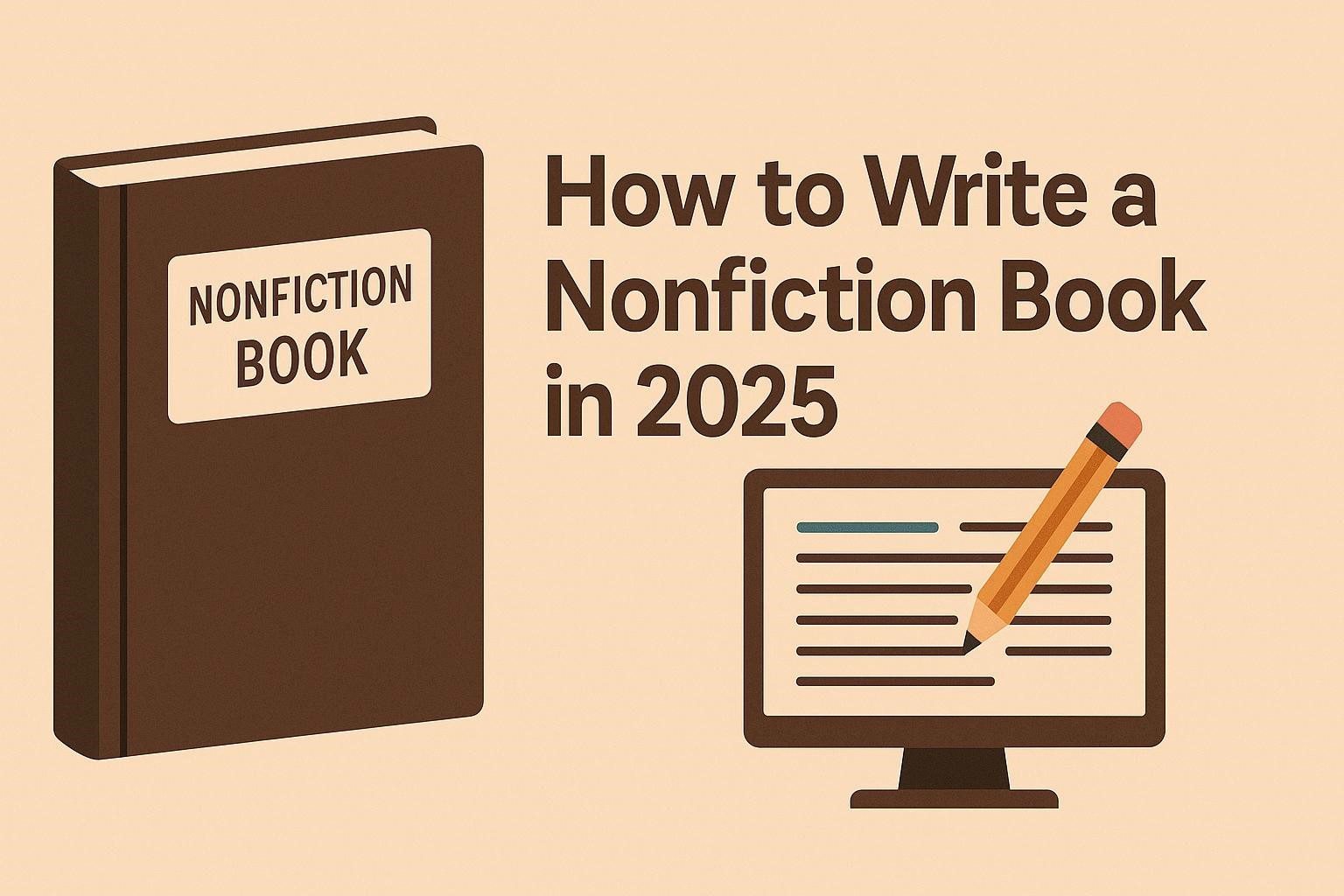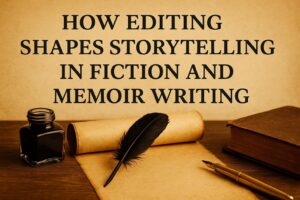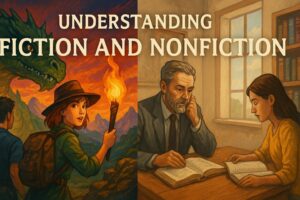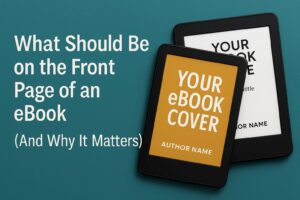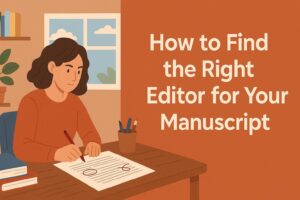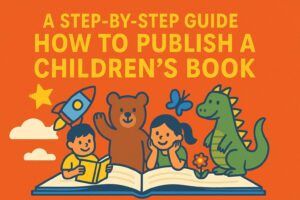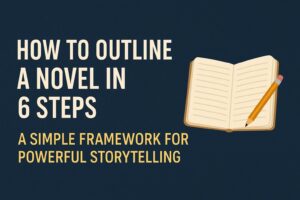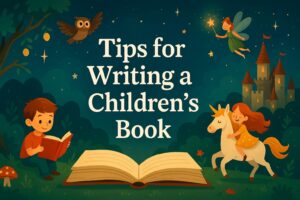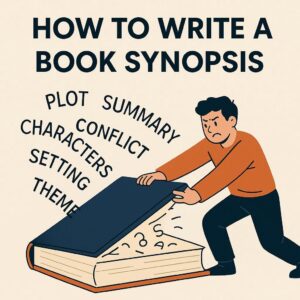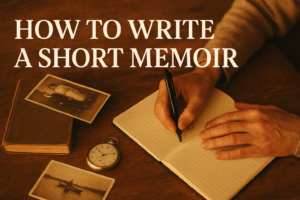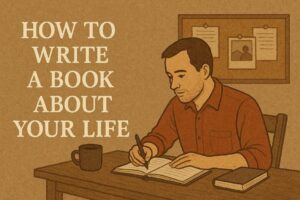The world has changed. AI is everywhere, attention spans are shrinking, and publishing options are endless. Here’s how to write a nonfiction book in 2025 that’s powerful, engaging, and authentically yours.
Introduction
Every book begins with a ghost. An unspoken idea that lingers in the back of your mind, tugging at you while you wash dishes, scroll your phone, or try to sleep. It whispers: write me down, give me shape, let me live. Most people ignore it. But you’re here because you can’t.
The year is 2025. Machines can draft paragraphs faster than you can blink. Algorithms predict what readers want before they know it themselves. And yet, paradoxically, what people crave more than ever is voice. A human mind reaching across the page saying: this mattered to me, it might matter to you too.
If you’ve been wondering how to write a nonfiction book that cuts through noise and feels alive, you’re in the right place. This guide will help you wrestle that ghost into words, shape it with structure, and release it into the world.
Find Your Why & Preconditions
Before you touch a keyboard, before you think about cover design or launch plans, you need to answer the one question that will decide everything:
Why am I writing this book?
Without a strong answer, you’ll quit. Maybe not today, maybe not tomorrow, but when it gets hard (and it will), you’ll fold.
Weak Whys That Kill Momentum
Here’s what a weak why sounds like:
- “I just want to make money.”
- “Everyone else has a book, so I should too.”
- “It might be good for my brand.”
Those aren’t whys. Those are excuses dressed up in ambition. They won’t get you out of bed at 5 a.m. They won’t pull you back to the draft after your tenth rejection. When your motivation is shallow, your book will be too. Readers can smell it.
Strong Whys That Keep You Going
Now, a strong why? That’s fuel.
- “I survived something brutal, and if I don’t write it down, someone else might not survive their version.”
- “I’ve cracked a system that saves people years of pain, and I need to share it.”
- “I want to leave something that lasts. Something my kids, my community, my people can lean on long after I’m gone.”
Strong whys are emotional. They’re bigger than you. They’re about connection, legacy, service. They can carry you through the grind because they matter more than the pain of sitting down to write.
The Three Preconditions
Once your why is locked in, you need to set the stage. Without these three, you’ll drift.
1. Time
No time = no book. You don’t need hours every day, but you do need consistency. A protected block, repeated again and again. Early mornings before the house wakes. Lunch breaks. Evenings without Netflix. Treat it like an appointment you cannot miss.
2. Platform
Your book is a bridge. You on one side, your reader on the other. You need a way to reach them. That doesn’t mean fame. It means connection. Maybe it’s 500 people on an email list. Maybe it’s a podcast audience of 50. Maybe it’s a workshop you run monthly. Start where you are. Grow as you go.
3. Clarity
Who’s your reader? If you don’t know, you’ll wander. Picture one person. Give them a name. What do they want? What do they fear? When you know that, your words will lock on like a missile.
Why This Matters
Nonfiction book writing isn’t just about chapters, it’s about stamina. Your strong why + these three preconditions = a foundation that can hold the weight of the book you’re about to build.
So don’t rush past this. Take an hour. Take a day. Nail your why. Set your preconditions. Without them, your book stays a ghost. With them, it finally has a fighting chance.
Validate Your Idea & Research the Market
You’ve got your why. You’ve carved out your time, your platform, your clarity. Now comes the part most writers skip, and regret later. Idea validation. This is where you make sure your book isn’t just burning in your chest, but also has a place in the world.
Why Validation Matters
Every bookstore, every Amazon category, is crammed with voices. Some are brilliant. Some are noise. If you don’t test your idea, you risk writing a book that no one needs, or worse, one that gets lost in the avalanche of similar titles. The goal isn’t to copy the market. It’s to understand it. You want to position your book where it meets a real hunger.
Start With Questions
Ask yourself:
- What problem does my book solve?
- Who is desperate for this solution?
- Has someone already written this book, and if so, how can I do it differently?
These questions strip away the fluff. They push you from “I think this is interesting” to “I know this matters.”
Do the Research
This isn’t about endless spreadsheets. It’s about being curious and ruthless.
Check Amazon categories. What are the top sellers in your niche? Look at reviews, especially the one-star and three-star ones. They reveal what readers feel is missing. Maybe people love the topic but hate the overly academic style. Maybe they want more stories, more steps, less fluff. This is free feedback before you even start writing.
Listen to your audience. Browse Reddit threads. Scroll through Facebook groups. Watch YouTube comments. People complain loudly about what isn’t working for them. That’s your goldmine.
Balance Fulfilment and Viability
Your book should feed your soul, but it should also have readers. A fulfilling idea without an audience is a private journal. A purely commercial idea without heart will collapse by chapter three. The sweet spot is where your passion collides with a real need.
The Shortcut Trap
Here’s where some people get lost: they start looking for shortcuts. They think book writing services will do the heavy lifting for them. Sure, services can help with editing, design, or even ghostwriting, but they can’t invent your why or validate your idea for you. That’s on you. Own this stage, because it’s the spine of everything that follows.
Proof of Concept
Once you’ve done the digging, test your idea in small doses. Write a blog post. Host a webinar. Share a chapter with a trusted group. Watch the reaction. Do people lean in and ask for more? Or do they smile politely and change the subject? The market speaks if you’re willing to listen.
If you’re asking how to write nonfiction book that doesn’t just exist but sells and sticks, validation is the answer. It’s not glamorous. It’s not as exciting as writing the first sentence. But it’s the difference between a book that finds readers and a manuscript that never leaves your hard drive.
Define Your Audience
Here’s the mistake almost every new writer makes: they say their book is “for everyone.” Wrong. A book for everyone is a book for no one. If you don’t know exactly who your reader is, your message will scatter. It won’t land.
Why Audience Clarity Matters
Nonfiction is about transformation. The reader picks up your book because they want something to shift: knowledge, mindset, habits, perspective. If you don’t know who that reader is, you cannot guide them. You will write too broadly, too vaguely, and they will drop the book by chapter two. Audience clarity keeps your tone sharp, your stories relevant, and your advice sticky.
Create a Reader Avatar
Start with one reader. Not a demographic chart, not a faceless target market. One person. Give them a name. Picture their age, their job, their pain points. Imagine what is on their desk, what keeps them up at night, what podcasts they listen to on the commute.
For example: Sarah, 34, a mid-level manager who feels stuck in her career. She is ambitious but drowning in self-doubt. She reads personal development books but feels they are too vague. She wants concrete steps, real examples, and encouragement that feels authentic.
Now, when you write, you are not addressing women aged 25 to 40. You are writing to Sarah. That intimacy is what makes readers feel seen.
Do the Research
Building an avatar is not guesswork. You need evidence. Here is where to look:
Amazon Reviews. Search for books in your niche. Read what people loved, but pay special attention to what they hated. Complaints about tone, structure, or missing details tell you what readers crave.
Forums and Communities. Reddit, Quora, niche Facebook groups. People pour their frustrations out online. If your book can solve those frustrations, you are onto something.
Surveys and Conversations. Ask your audience directly. If you already have an email list or social media following, run a poll. Ask what they are struggling with, what books they have tried, where they still feel stuck.
Align Tone, Scope, and Value
Once you know your reader, shape your book to fit their world. If they are busy professionals, keep chapters short and actionable. If they are academics, they will expect research, citations, depth. If they are looking for comfort, your tone needs warmth and storytelling.
Audience clarity does not limit your creativity. It sharpens it. You stop writing in circles. Every chapter, every anecdote, every exercise speaks directly to your reader.
Why It Is Essential
Nonfiction book writing is not just about your voice. It is about resonance. A book succeeds when a reader feels, “This is me. This is what I have been searching for.” That connection is not luck. It is built from research, empathy, and ruthless clarity about who your book is for.
When you define your audience, you stop shouting into the void. You start having a conversation. And that is where books change lives.
Craft Outline and Structure
Every powerful nonfiction book begins with a skeleton. Without structure, your book is a pile of thoughts. With structure, it becomes a roadmap that pulls the reader from page one to the final word.
Why Structure Matters
Readers are busy. They want clarity. They want flow. If your chapters feel like random journal entries, they will quit. A strong outline forces you to think logically before you write emotionally. It gives your book shape, sequence, and momentum.
Start With a Mind Map
Grab a blank page or a digital tool. Write your main idea in the centre. Then branch out: stories, lessons, statistics, questions. Don’t edit yet. Empty your head. This messy stage helps you capture the full landscape of your book before you start pruning.
Group Ideas Into Themes
Once you have your mind map, start clustering. What belongs together? Which stories naturally fit alongside certain lessons? This is where themes emerge. For example, if you are writing about resilience, clusters might form around childhood, workplace, crisis, and recovery.
Build a Chapter-by-Chapter Flow
Now you are ready to impose order. Take each cluster and ask: what does the reader need to know first? What builds naturally into the next lesson? A common mistake is writing chapters based on what you feel like writing, instead of what the reader needs to learn in sequence. Your outline should be about their journey, not your whims.
Use Proven Templates
There is no need to reinvent the wheel. Many writers use tried and tested frameworks. A popular one is the three-part model: beginning (the problem), middle (the solution), end (the transformation). Another option is the step-by-step guide format, where each chapter is one rung on the ladder. Resources from experts such as Jordan Ring or Self-Publishing School offer templates you can adapt.
Keep It Flexible
An outline is a guide, not a prison. You will move things around once you begin writing. The key is to start with enough structure that you are never staring at a blank page, wondering what comes next. Some writers are tempted to skip outlining and hand the entire process over to book writing services. While professional help can polish your structure later, no one knows your material like you do. This stage is about clarity of thought. It is about forcing yourself to translate chaos into order. No service can do that for you.
An outline is not busywork. It is the difference between wandering and guiding. A well-built structure gives your nonfiction book clarity, coherence, and power. Without it, your message risks drowning in tangents. With it, you hold your reader by the hand and lead them somewhere worth going.
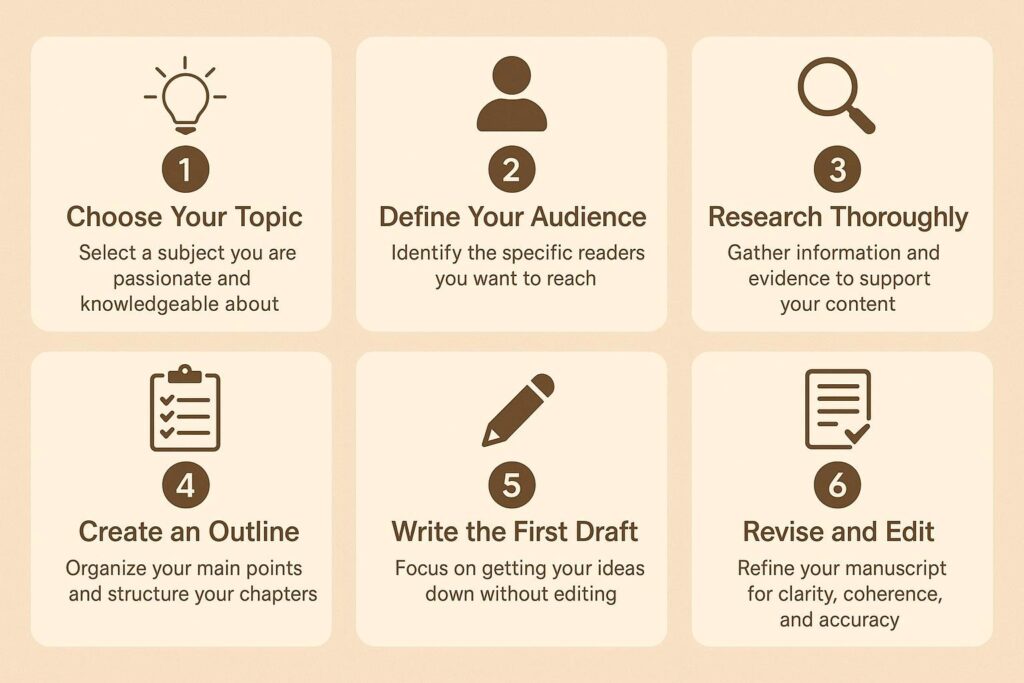
Use Storytelling to Engage
Facts inform. Stories transform. That is the secret. You can list all the statistics, charts, or step-by-step systems you want, but if your reader does not feel it, they will forget it. Stories make them stay.
Think about the books you remember years after reading. Were they the ones that read like instruction manuals? Or the ones that made you feel like you were walking beside the author, hearing their voice, seeing their struggles, living their lessons?
The Power of Anecdotes
When you tell a story, you are not showing off. You are building trust. A short anecdote about failure teaches more than a polished lecture on success. A vivid image; what the room smelled like, the sound of your own heartbeat, anchors your message in the reader’s memory.
The Arc of Transformation
Every nonfiction book, no matter the subject, is about change. The reader opens the book in one state and closes it in another. Storytelling is how you make that transformation visible. Show them the before and after. Show the messy middle. If your book is about health, don’t just explain the science, take them through the nights you lay awake, the mornings you wanted to give up, and the small victory that pulled you forward.
Borrow From Fiction
Creative nonfiction borrows the best tricks from novels. Dialogue. Scene-setting. Sensory details. You do not have to invent anything. Your life, your research, your interviews already contain scenes worth writing. Place your reader in the moment. Let them hear the frustration in a colleague’s voice, feel the sweat on your palms before a big decision, or taste the bitter coffee at 3 a.m. when the breakthrough finally comes.
Why It Matters
When people ask how to write a nonfiction book that actually holds attention, the answer is always storytelling. Information alone skims the surface of the mind. Storytelling pierces deeper. It creates connection. It makes the reader nod and whisper, “That’s me.”
This is not fluff. It is the glue that keeps readers turning pages. Use your stories wisely. Layer them into your teaching points. Make your lessons feel lived, not lectured. Do that, and your book will not just be read, it will be remembered.
Establish Writing Discipline
Inspiration is a liar. If you wait to “feel like writing,” your book will never exist. Discipline, not inspiration, finishes manuscripts.
Treat Writing Like a Job
If you had a meeting with your boss, you would not skip it because you were tired or uninspired. Writing is no different. Block out time. Put it in your calendar. Show up, even when you don’t want to. The act of sitting down is the hardest part, but once you are there, momentum kicks in.
Build Consistency, Not Bursts
Too many writers treat their book like a sprint. They go hard for a week, then crash and burn. What works is the opposite: small, steady sessions repeated relentlessly. Five hundred words a day is better than five thousand once a month. Consistency compounds.
Create a Ritual
Your brain loves cues. Build a ritual that signals it is writing time. Same desk, same playlist, same cup of coffee. These small habits flip a mental switch. Over time, your body recognizes the pattern: sit here, open laptop, write.
Silence the Excuses
You will tell yourself you are too busy. You are not. Everyone has wasted hours scrolling feeds or binging shows. Steal some of that time back. Wake up earlier, cut a distraction, write on your lunch break. If you want a book, something else has to go.
Love the Process, Not Just the Goal
Yes, finishing feels amazing. Yes, holding your book in your hands is worth it. But if you only care about the end, you will hate the grind. Find satisfaction in the daily act of building something. Even the ugly first drafts count. Especially those.
Write for One Reader
Discipline gets easier when you stop thinking about an invisible crowd and write for one person. The reader you defined earlier. Talk to them. Picture them sitting across from you. Suddenly the blank page becomes a conversation, not a lecture.
Nonfiction book writing is not glamorous. It is repetition. It is unglamorous hours stacking up into something significant. The writers who finish are not the ones who wait for lightning. They are the ones who keep showing up, rain or shine, day after day. That is how books get written.
Incorporate AI and Modern Tools
It is 2025, and the writing landscape looks nothing like it did a decade ago. You now have access to tools that can brainstorm ideas in seconds, generate outlines in minutes, and even spit out entire chapters at the click of a button. But here is the danger: convenience can dilute authenticity. The real challenge is learning how to use technology as an assistant, not a replacement.
Where AI Can Help
AI excels at the grunt work. Struggling to find a chapter title? Let it generate a list of twenty, then refine the best one. Need a bank of examples, quotes, or prompts? Use it to gather raw material faster than you could alone. Research is another area where AI shines, scanning articles and studies to give you summaries in seconds. This clears space for you to focus on the deeper, more creative work.
Where You Must Take Control
What AI cannot do is inject soul into your writing. It cannot recreate your lived experiences, your failures, your hard-earned perspective. If you lean too heavily on machine-generated text, your book will sound like everything else: clean, generic, forgettable. Readers buy nonfiction for a voice. Your voice. That is irreplaceable.
Use the Right Mix of Tools
Beyond AI, modern writers have access to distraction blockers, project management boards, and collaboration platforms. Tools like Scrivener, Notion, or even a simple Pomodoro timer help you track progress and stay focused. Choose the ones that make you more consistent, not more distracted.
Keep Your Voice at the Core
When people ask how to write a nonfiction book today, the answer is not “use AI to do it for you.” The answer is: let AI clear the path so your authentic voice can take the stage. Think of it like hiring an assistant who sets up the room, but you are still the one delivering the speech.
Modern tools can make writing faster, but faster is useless if the final product feels hollow. Use technology to lighten the load, streamline the process, and spark ideas. Then step in and do the hard work that only you can do. That balance is how you create a book that feels both current and deeply human.
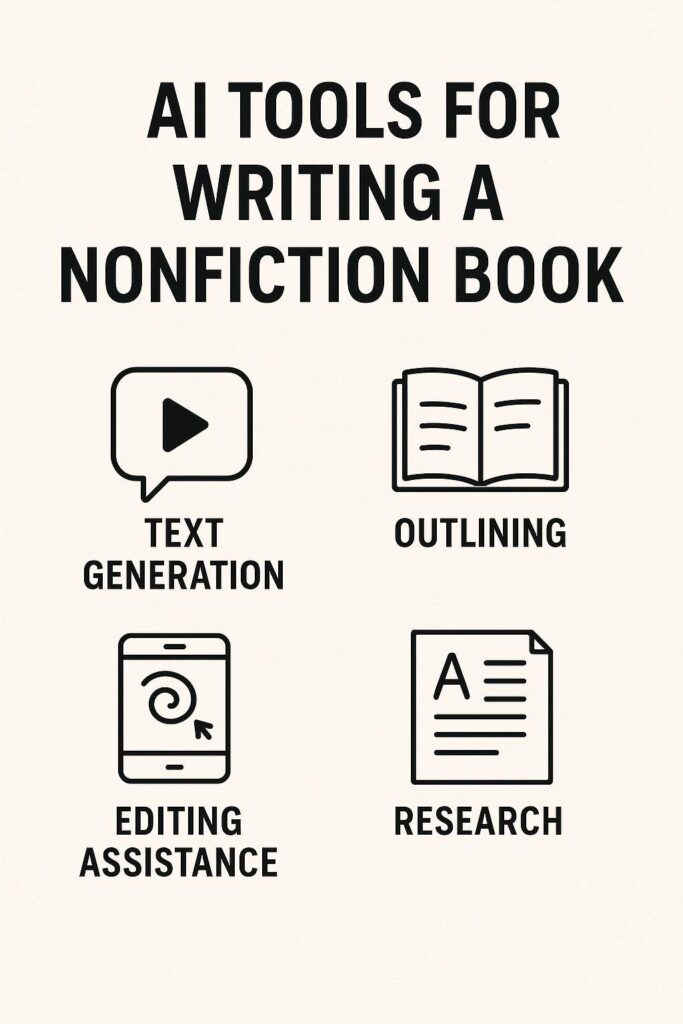
Write in Sequence and Revise Thoroughly
If you want your book to make sense, stop jumping around. Write in sequence. Start at chapter one and keep going until you hit the end. Skipping around feels fun, but it breaks the flow. It confuses you, and worse, it confuses the reader. Writing in order locks you into a rhythm. It gives each chapter the weight and continuity it needs.
Why Sequence Matters
Your book is not a blog collection. It is a journey. Each chapter should set up the next. When you write in order, your brain naturally remembers what came before and builds what comes after. That coherence is what makes your book readable instead of scattered.
Revision Is Not Optional
Finishing a draft is only step one. Now comes the real work: revision. This is where you strip out the fluff, cut repetition, sharpen arguments, and tighten stories. Do not get sentimental about your words. Most of them will not survive. That is how good writing happens.
Get Brutal Feedback
Stop revising in a vacuum. Hand your draft to people you trust to be honest, not polite. Ask them where they got bored. Ask them what did not make sense. Pay attention when multiple people point out the same weakness. That is not taste, that is truth.
Editors Make Books
Once you have revised on your own, get professional eyes on it. A good editor with experience in nonfiction or fiction book writing will tear your manuscript apart and hand it back stronger. Do not see this as criticism. See it as transformation. Great books are not written. They are rewritten.
Writing in sequence keeps your draft coherent. Revising with ruthless honesty makes it powerful. Feedback makes it bulletproof. Do not fear the red pen. Embrace it. That is the difference between a draft you hide on your hard drive and a book that readers cannot put down.
Introduction and Hook: Sell Your Book
Your introduction decides everything. If you lose the reader here, they will never see chapter two. Harsh but true.
Lead With a Promise
Your first pages must answer one question: Why should I keep reading? Show the reader exactly what they will gain. Not vague inspiration. Specific transformation. “By the end of this book, you will…” should be crystal clear in your own mind, even if you do not phrase it that bluntly.
Prove You Are Worth Listening To
Readers want to know why you. Establish your credibility fast. Share the scars, the wins, the years of obsession that qualify you to teach this subject. Do not bury it. If you wait until chapter four to prove your authority, your reader is already gone.
Hook With Energy
Dull introductions kill good books. Open with a story, a shocking fact, or a challenge to the reader. Make them lean forward. The goal is not to sound clever. The goal is to make them hungry for the next page.
Avoid Generic Fillers
Do not start with “This book is for anyone who…” or “In this book you will learn…” Readers skim right past it. Any experienced book writing service will tell you that your introduction needs teeth.
Think of your introduction like a pitch. It is not about being pretty. It is about being clear, credible, and impossible to ignore. Nail your promise. Show your authority. Hook them hard. If you win them here, the rest of the book has a fighting chance.
Polish, Publish and Market
This is the factory floor. No fluff. Clear steps. Execute in order.
Step 1: Structural edit
- Revisit your core promise. Does every chapter serve it
- Cut repetition and tangents. Merge thin chapters
- Check flow. Each chapter should set up the next
- Add missing beats where the reader will have questions
Step 2: Line and clarity edit
- Shorten sentences
- Replace jargon with plain English
- Swap passive for active voice
- Add concrete examples where claims feel airy
Step 3: Beta readers
- Choose 5 to 7 readers who match your avatar
- Give them a simple brief and a deadline
- Ask targeted questions. Where did you skim. What was unclear. What was gold
- Look for patterns in feedback and act on them
Step 4: Professional editing
- Developmental edit for structure and argument
- Line edit for tone and flow
- Copy edit for grammar and consistency
- Proofread on the final designed pages
Step 5: Package the book
- Title and subtitle that promise a result
- Cover brief with three comps your designer can study
- Back cover copy with a hook and social proof
- Interior formatting that is clean and scannable
Step 6: Metadata and positioning
- Choose BISAC categories and keywords that match reader intent
- Write a sales description that leads with the problem and the payoff
- Set pricing based on your niche and format
- Secure ISBNs and align imprint details
Step 7: Choose your path
Self publishing
- Upload to KDP for Amazon and IngramSpark for wide distribution
- Test print proofs and fix any layout issues
Traditional
- Build a strong proposal. Promise, audience, comp titles, platform, sample chapters
- Query agents who represent your niche and follow guidelines exactly
Step 8: Build the runway
- Start your email list now
- Recruit an advance reader team for early reviews
- Prepare assets. One sheet, media kit, sample chapter, author photos
Step 9: Preorder and outreach
- Announce preorders with a simple bonus
- Pitch podcasts, newsletters and niche communities weekly
- Schedule guest articles and live sessions
Step 10: Launch week
- Daily posts with a clear call to action
- Go live, answer questions, read a page
- Drive reviews ethically and thank readers publicly
Step 11: After launch
- Keep talking about the book without sounding repetitive
- Repurpose chapters into talks, workshops or a course
- Track metrics. Sales, reviews, email growth, speaking invites
If you have been searching how to write a nonfiction book, remember this final rule. Momentum beats perfection. Ship, learn, iterate, keep selling.
Frequently Asked Questions
Q1: How long does it take to write a nonfiction book today?
It depends on scope, discipline, and tools. With a solid outline and a consistent daily schedule, you can draft a book in 6 to 12 months. If you use modern tools like AI for brainstorming and organization, you can speed that up. The danger is not time but drift. Losing focus. Stick to your schedule, keep showing up, and your draft will emerge faster than you think.
Q2: Can AI do the nonfiction book writing for me?
AI can help, but it cannot replace you. It is fantastic for outlines, idea generation, and even smoothing rough sentences. But if you let AI do the heavy lifting, your book will sound generic. Readers want your perspective, your scars, your voice. Use AI to clear clutter, not to speak for you.
Q3: Do I need a literary agent to publish my nonfiction book?
Not always. Self-publishing today is powerful, fast, and scalable. You control the process, keep the royalties, and build your audience directly. A literary agent and traditional deal can still bring prestige, editorial support, and distribution muscle. The right path depends on your goals.
Q4: How do I keep readers engaged in nonfiction?
Storytelling. Facts alone are forgettable. Wrap your lessons in stories, characters, scenes, and emotion. Show transformation, not just information. If you make readers feel something, they will stay with you.
Q5: What if I hit writer’s block for my nonfiction book?
Do not panic. Writer’s block is often perfectionism in disguise. Stick to your routine. Write badly if you must. Progress is better than paralysis. Sometimes the only cure is to keep typing until momentum kicks back in.
Conclusion
Writing a book in 2025 is not about chasing trends or hiding behind AI. It is about clarity, discipline, and voice. You have seen the steps: find your why, validate your idea, define your reader, structure your chapters, tell stories, and revise until it shines. Publishing choices, marketing, and community all matter, but none of it works without the grit to keep showing up. If you are wondering how to write a nonfiction book that feels alive, the answer is simple: start, stay consistent, and refuse to quit. Your voice is the difference. Now go write it.

